Benefits of Small Pondweed
- Oxygen Generation: Vital for aquatic life.
- Nutrient Cycling: Reduces algae blooms.
- Habitat Provision: Shelters fish & invertebrates.
- Sediment Trapping: Improves water clarity.
— Enhances overall ecosystem health.
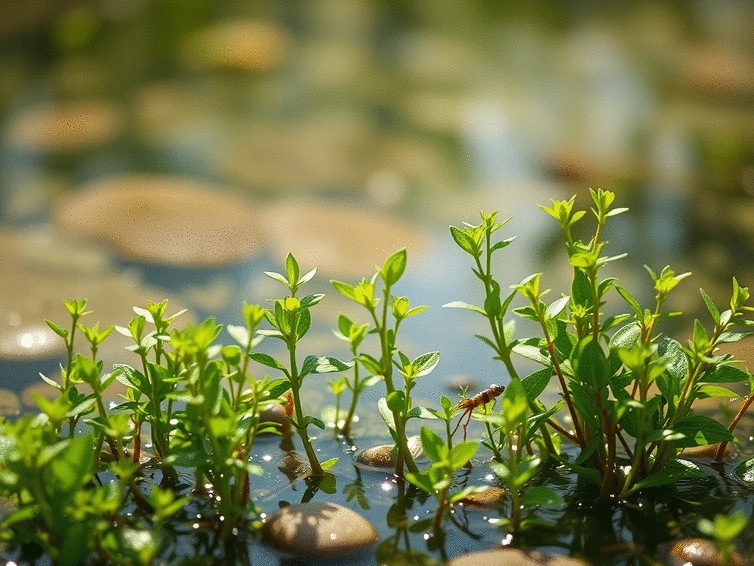
As we delve into the ecological significance of small pondweed, consider how this unassuming plant might be the lifeline of our aquatic ecosystems. Its myriad benefits extend beyond mere aesthetics, influencing everything from oxygen production to habitat sustainability.
Small pondweed plays a crucial role in maintaining the balance of aquatic ecosystems. The visual below highlights its key benefits and the effective strategies for its sustainable management.
— Enhances overall ecosystem health.
— Balances growth with ecosystem needs.
1. Nutrient Overload
(High N, P)
2. Algae Blooms
(Blocks sunlight)
3. Oxygen Depletion
(Impacts aquatic life)
As we explore the fascinating world of aquatic ecosystems, one plant stands out for its crucial role—the small pondweed. This adaptable species not only contributes to the beauty of our waterways but also plays a significant role in maintaining ecological balance. Understanding small pondweed is essential for anyone involved in waterway management or conservation efforts.
In my experience with Aquatic Weed Solutions, I’ve seen firsthand how recognizing and managing small pondweed can lead to healthier aquatic habitats. Let's dive into the characteristics and ecological benefits of this remarkable plant!
Small pondweed, often identified as Potamogeton pusillus, is a perennial aquatic plant that thrives in freshwater environments. It typically features slender, linear leaves that can grow up to 7 cm long. These leaves are crucial for photosynthesis and provide cover for various aquatic organisms.
By learning to identify small pondweed, landowners and waterway managers can assess its health and function within the ecosystem. This knowledge is key to fostering a rich aquatic environment! For further details on pondweed identification, consult resources from the Connecticut Agricultural Experiment Station.
It’s essential to differentiate small pondweed from similar species, as this can affect management decisions. Unlike other pondweed varieties, small pondweed has unique stem and leaf characteristics that set it apart.
Understanding these distinctions not only informs management practices but also helps in conserving the diversity of aquatic life.
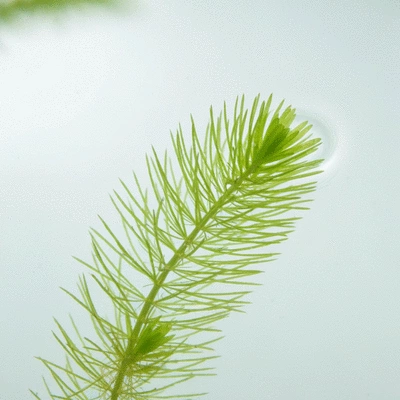
One of the remarkable features of small pondweed is its role in photosynthesis, a vital process that contributes to oxygen production in our waterways. Through photosynthesis, small pondweed absorbs carbon dioxide and releases oxygen, enhancing water quality and supporting aquatic life.
The presence of small pondweed not only enriches the water but also ensures a thriving habitat for many aquatic species. This underscores the importance of maintaining its populations!
Oxygen is the lifeblood of aquatic ecosystems. It supports the respiration of not just fish, but also invertebrates and beneficial microorganisms. Without adequate oxygen levels, aquatic systems can suffer, leading to a decline in species diversity and overall health.
Small pondweed serves as a natural oxygen generator, especially in smaller ponds and lakes where oxygenation can be a challenge. By fostering the growth of small pondweed, we can create a more balanced ecosystem.
Small pondweed plays a crucial role in nutrient cycling, which helps in maintaining water quality. By absorbing excess nutrients such as nitrogen and phosphorus, small pondweed can mitigate the risk of algae blooms. This nutrient uptake is critical for maintaining healthy aquatic systems, as demonstrated in a study on aquatic plant nutrient cycling.
By understanding how small pondweed interacts with its environment, we can better protect our waterways and prevent the harmful effects of nutrient overload.
In addition to nutrient uptake, small pondweed contributes to sediment trapping. Its root system stabilizes sediments, preventing erosion and promoting water clarity. This is vital in maintaining healthy aquatic habitats.
In my outreach efforts, I’ve seen how improving water quality through small pondweed management not only benefits the ecosystem but also enhances recreational opportunities for the community!
Small pondweed is more than just a plant; it serves as a habitat for a variety of aquatic wildlife. Fish and invertebrates rely on small pondweed for shelter, breeding grounds, and food sources. This relationship is vital for sustaining these populations. Research on macrophyte communities and aquatic invertebrates further highlights this crucial role.
When we support small pondweed growth, we help sustain the rich tapestry of life within our waters. It’s all interconnected!
By enhancing habitat structure, small pondweed contributes to biodiversity in aquatic ecosystems. Diverse habitats support a wide range of species, leading to more resilient ecosystems. This biodiversity is essential for the long-term health and sustainability of our waterways.
Investing in the management of small pondweed not only promotes a thriving aquatic environment but also benefits the larger ecosystem in which it resides.
Here are some common questions about small pondweed and its role in aquatic ecosystems:
Eutrophication is a significant threat to aquatic health, often resulting from nutrient overload in freshwater systems. This process can lead to excessive algae growth, which suffocates underwater plants like small pondweed and disrupts the overall ecosystem balance.
Understanding eutrophication empowers us to take action, ensuring that our aquatic ecosystems remain healthy and vibrant.
There are several effective strategies for mitigating eutrophication, including:
By adopting these practices, we can protect not just small pondweed but the entire aquatic ecosystem. Every action counts!
While small pondweed is beneficial, overgrowth can lead to challenges in management. Signs of overgrowth include dense mats that can obstruct water flow and hinder recreational activities.
By recognizing these signs, we can take proactive measures to maintain healthy growth levels and support our aquatic ecosystems.
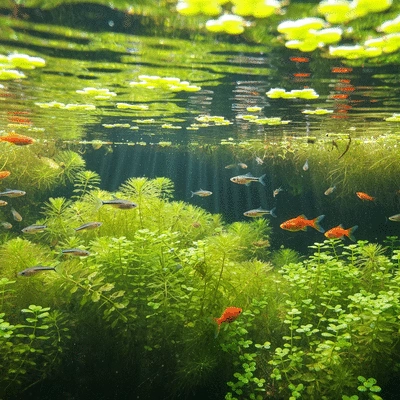
Effective management of small pondweed involves a combination of methods to control overgrowth while preserving its ecological benefits:
These methods can promote a balanced ecosystem, allowing small pondweed to thrive without overwhelming other species.
Across various regions, there have been successful restoration projects focusing on small pondweed management. These initiatives demonstrate how informed practices can rejuvenate aquatic ecosystems.
Such success stories inspire all of us in the field to continue our efforts in promoting healthy waterways!
Long-term monitoring is essential to evaluate the success of restoration projects. By studying small pondweed populations, we can gain insights into the overall health of aquatic ecosystems.
Incorporating these strategies fosters a deeper understanding of our aquatic environments, ensuring their continued vitality.
Aquatic biodiversity hotspots are areas rich in diverse species and ecosystems. Protecting these regions, where small pondweed often thrives, is crucial for preserving ecological balance.
By focusing on these biodiversity hotspots, we can promote sustainable practices that benefit both small pondweed and the entire aquatic ecosystem.
Small pondweed can enhance water quality by absorbing excess nutrients, which helps in mitigating harmful algae blooms. It has been shown that maintaining healthy populations of small pondweed can lead to significantly clearer waters and improved biodiversity in aquatic ecosystems.
As we reflect on the various roles that small pondweed plays in aquatic ecosystems, it becomes clear that its presence is vital for maintaining ecological balance. This remarkable plant not only supports oxygen production and nutrient cycling but also provides essential habitats for diverse wildlife. Recognizing these benefits is the first step toward effective management practices that ensure the long-term health of our waterways.
By understanding the ecological importance of small pondweed, we can take meaningful steps to promote its presence while also addressing potential management challenges. As someone who has worked alongside landowners and waterway managers, I've seen firsthand how proactive approaches can greatly enhance aquatic habitats.
Small pondweed is critical for several reasons. It improves water quality, supports aquatic life, and enhances biodiversity within local ecosystems. Here are some key benefits:
Understanding these benefits helps clarify why small pondweed should be prioritized in conservation efforts. When managed properly, it can significantly enhance the overall health of aquatic ecosystems.
Managing small pondweed effectively requires a blend of strategies that encourage its growth while preventing overpopulation. Here are some actionable steps to consider:
By adopting these measures, we can maintain healthy waterways that support both small pondweed and the myriad of life that depends on it.
It's vital to foster responsible conservation practices among local communities and stakeholders. By offering educational resources and workshops, we can empower individuals to take action in protecting their aquatic environments. At Aquatic Weed Solutions, we aim to provide the necessary tools and information to promote these initiatives!
One effective way to enhance aquatic ecosystem health is through community involvement. Engaging local residents not only raises awareness but also builds a sense of stewardship. Organizing cleanup events or educational seminars can inspire individuals to contribute positively to their local waterways.
Education plays a critical role in fostering a culture of conservation. By increasing awareness about the benefits of small pondweed and the importance of aquatic ecosystems, we can inspire collective action. Here's how we can make a difference:
These initiatives not only educate but also engage the community, creating a united front in aquatic conservation!
Native species are essential for maintaining the resilience of our aquatic habitats. By ensuring that small pondweed thrives alongside other native plants, we enhance the overall functionality of ecosystems. Habitat connectivity allows for the movement of species and genetic diversity, which are crucial for adapting to environmental changes.
Finally, involving local communities in wetland conservation efforts can lead to sustainable outcomes. When community members are actively engaged, they develop a connection to their local ecosystems that fosters long-term dedication and support. The collective effort of individuals in preserving our waterways cannot be overstated, and I encourage everyone to take part in this vital work!
Here is a quick recap of the important points discussed in the article:
Managing Aquatic Weeds Effectively
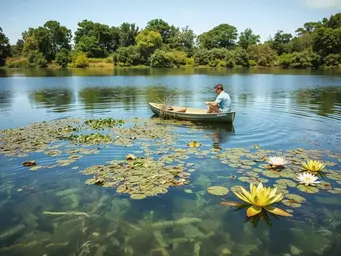
As we delve into the hidden challenges of our water ecosystems, understanding the role of aquatic we
Impact of Aquatic Weeds on Recreation

As we dive into the world of aquatic ecosystems, the presence of invasive aquatic weeds may not only
Understanding Aquatic Weed Varieties
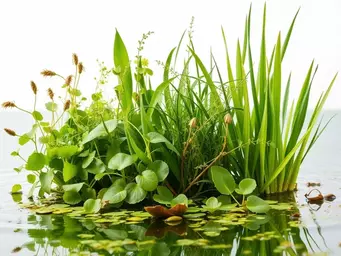
What if understanding aquatic weeds could be the key to restoring our waterways? As we dive deeper i
Managing Aquatic Weeds Effectively
Impact of Aquatic Weeds on Recreation
Understanding Aquatic Weed Varieties
Integrated Aquatic Weed Management Methods
Integrated Approaches to Aquatic Weeds